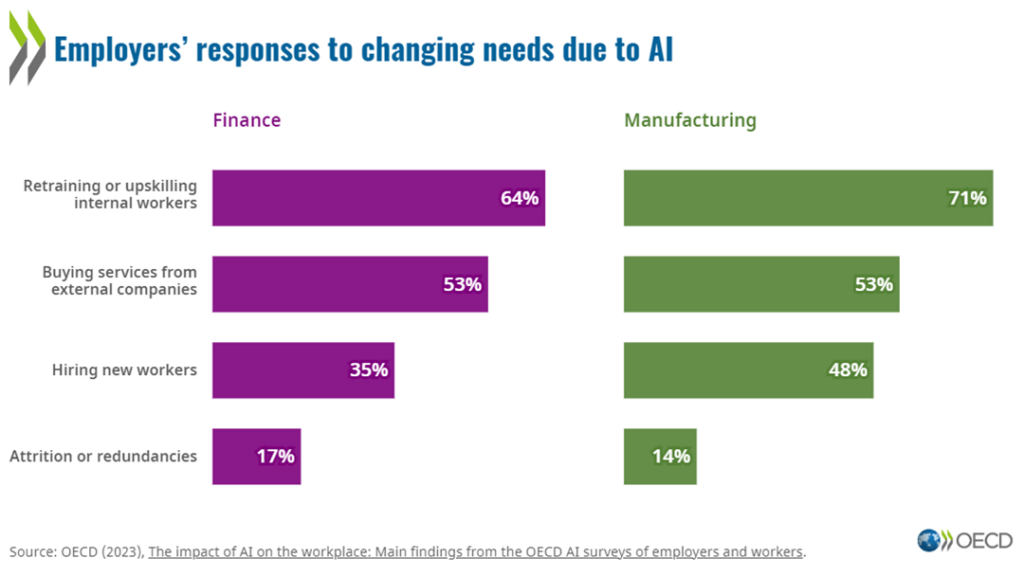According to legend, King Canute commanded the incoming tide to turn around. Yet despite his all-round kingliness and a tendency to repeat himself in a voice that even those who loved him would describe as hectoring, the tides paid no attention. His fawning courtiers, akin to the modern social media mob, cancelled him.
This tale is my blunt attempt at a metaphor for modern businesses struggling to adapt to the rising waves of technological change. In particular, Artificial Intelligence (AI).
Much like Canute, many companies remain convinced imposing top-down policies will force stubborn genies back into bottles.
And then there’s the fact that AI has itself become a buzzword – a single widely used term, whilst there are a range of technologies at play.
Implementing AI policy isn’t a simple task. It requires understanding the technology, assessing how it fits with the company’s goals and ethics, legal and regulatory compliance, and determining how to integrate it with existing systems and processes.
However, the AI tide pays little attention to corporate constraints. The widespread availability of foundation models such as GPT-4 is accelerating AI adoption. Marketsandmarkets reports the AI market is projected to surpass $150 billion in 2023, and generate revenue of $1,345.2 billion by the end of 2030.
The Bureaucratic Quagmire
Larger companies are the main offenders. Lost in a bureaucratic quagmire, two or (more likely) more disconnected working groups duplicate effort, drafting AI policies that are, at best, paper tigers – buzzword-heavy proposals that look impressive but lack substance or bite.
Leadership boldly announces multi-year AI strategies to great fanfare.
But when the cheers die down, little changes. The task forces disband and move on to the next shiny priority.
Add in budget restrictions, existing technology infrastructures, regulatory compliance, organisational culture, and stakeholder expectations – and the already complex process of AI policymaking becomes even more challenging.
As labour shortages become a pressing concern, 25% of companies are turning to AI adoption to address this issue, according to an IBM report.
When did top-down ever work?
The internet is a prime example of how consensus-driven, bottom-up decision-making works. Where nations have opted to force genies back into bottles and impose regulation, cutting their versions of the internet off from the world, they stand alone. Literally disconnected.
There’s a risk of the same happening with corporate AI policy-making as each organisation decides to draft and impose rules that protect their tiny corner of the bigger picture.
Globally, there are now over 800 AI policy initiatives, from the governments of at least 60 countries, with most being introduced after 2016 (Source: Internet Policy Review). While the EU is legislating to implement a rules-based approach to AI governance, the UK is proposing a ‘contextual, sector-based regulatory framework’ anchored in its existing, diffuse network of regulators and laws.
The result? Fragmented strategies where AI becomes a buzzword rather than a transformative tool.
AI’s unique characteristics and the rapidly changing landscape make a top-down approach inadequate. The constraints that companies usually work within will become major hindrances when applied to AI.
As anyone with scars from trying will confirm, cats refuse to be herded.
Working together
Top-down management rarely works in any field where change moves at speed. Madness awaits when we work in silos, imposing very specific policies that control our very specific domains.
Indian banks recently trumpeted tools allowing payment by voice, solving a problem with low technology take-up in rural areas. Elsewhere, companies shout about tools that clone your voice, converting text to speech and sounding ‘almost’ human. How long until they sound very human indeed?
Have you ever used one of these to have Alexa turn off the lights? I have.

People are people
AI policymaking is almost always dumped on the teams responsible for technology and innovation. AI is viewed by leadership as primarily a technical matter rather than a broad business issue.
Introducing new technology is never a total solution. Technology works best in organisations with a clear alignment between the people, processes and the technology being deployed.
The Centre for Data Ethics and Innovation (CDEI) notes: “The AI sector can learn from other sectors about how transparency can help to empower diverse groups of stakeholders to participate in, improve, and hold systems to account.”
The path forward requires a holistic approach, where marketing, sales, technology, and ethics walk hand-in-hand. A well-thought-through approach can distinguish between being swept away by the tide or riding the wave to new horizons.
The tide of AI is not to be commanded or feared but embraced and navigated with wisdom and willingness to evolve. Today’s shiny new thing will be replaced tomorrow by something even shinier.
A future unbound
Just as Canute’s command to the tides serves as a timeless lesson about the folly of resisting natural forces, businesses must also recognise that the tide of AI is beyond mere command or control.
It is a force to be navigated with wisdom, embraced with a willingness to evolve, and implemented with a well-thought-through alignment of technology, people, and process.
Those who adapt and bridge the chasm between policy and practice will not merely survive the relentless march of technology; they will thrive, riding the wave to new horizons. The challenge is profound, but the path is illuminated by lessons from the past and the promise of a future unbound.


